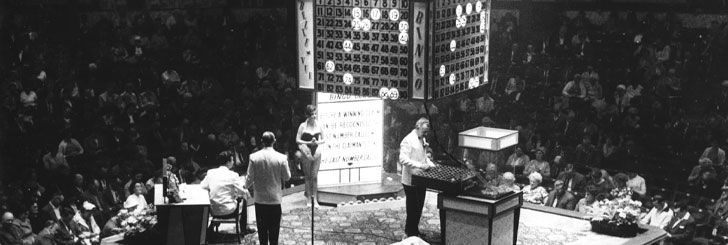History of Bingo
A lottery game called “Il Giuoco del Lotto d'Italia” was being played in Italy by about 1530. In eighteenth-century France playing cards, tokens and the calling out of numbers were added. In the nineteenth century a game like this was widely played in Germany to teach children spelling, animal names and multiplication tables.
The French game Le Lotto appeared in 1778, featuring 27 squares in a layout of three rows and nine columns. Five squares in each row had numbers ranging from 1 through 90, which led to the modern design.
In the early 1920s, Hugh J. Ward created and standardized the game at carnivals in and around Pittsburgh and the Western Pennsylvania area. He copyrighted it and published a rule book in 1933.
The game was further popularized by Edwin Lowe. While at a traveling carnival near Atlanta in December 1929 the toy merchandiser saw people eagerly playing a game called “Beano” following Ward's rules, with dried beans, a rubber stamp, and cardboard sheets. Lowe took the game to New York where friends liked playing it. The Lowe-produced Bingo game had two versions, a 12-card set for $1.00 and a $2.00 set with 24 cards. By the 1940s there were Bingo games throughout the US.
The origin of the name Bingo is unknown but may date to the middle 1920s. There are claims that one of Lowe's friends was so excited to have won that she yelled out “Bingo” instead of “Beano,” or that the word echoes the sound of a bell.
[kkstarratings]
 | Best Casinos to Play Bingo |

 |
- Fun, fair, and full of surprises.
- Localised payment options and fast 24-hour payments processing
- Customisable characters of your choice and new levels as Metrocity districts
Best Casinos to Play Bingo

- Online since 1997
- Excellent proprietary software
- Multiple Languages






















